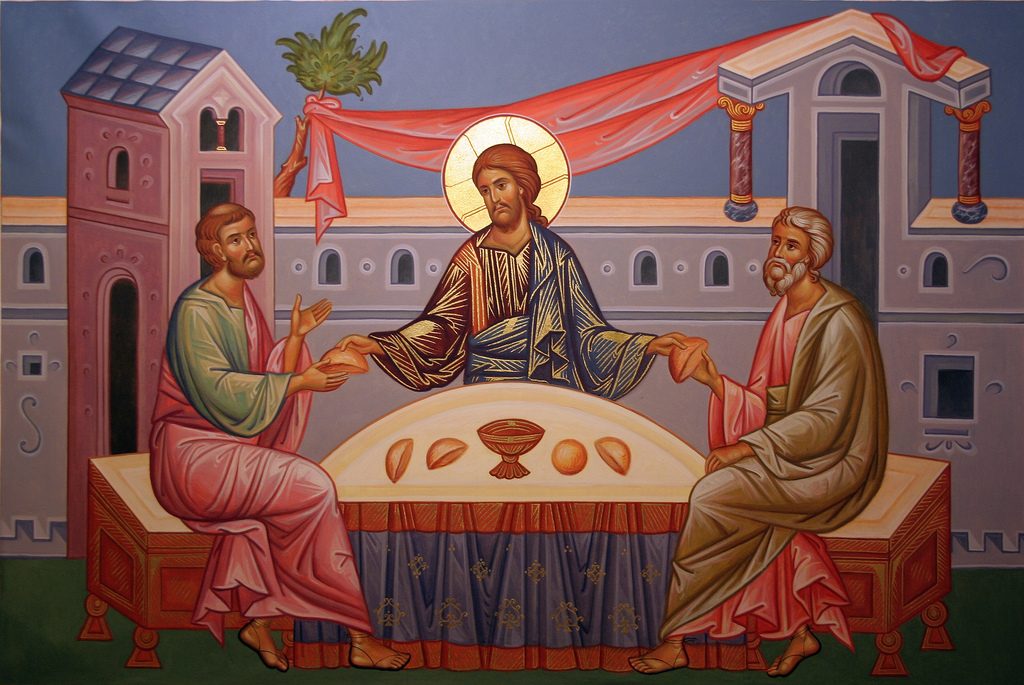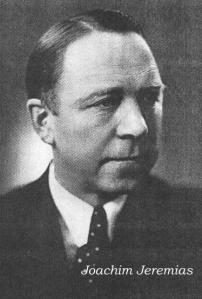I am currently sharing the evidence for a pre-Christian Jewish beliefs in a suffering servant, even dying, messiah set out by Joachim Jeremias, but in response to a reader’s comment I would like to list here some contemporary scholars who have presented similar or related arguments. I can only list the few whose works I have read and no doubt there are many more I am yet to discover.
In one or two of the linked articles below are citations by a contemporary scholar suggesting that the same evidence we have been reading from Jeremias is not “absolutely conclusive”; others, however, continue to see the evidence as more clear cut.
—
The first name to come to mind is the prominent Jewish scholar, Daniel Boyarim. Boyarim points out that Jewish ideas of a sacrificed messiah logically have to precede Christianity since the rabbis would never have copied the idea from the Christians.
—
Martha Himmelfarb discusses pre-Christian interpretations of a dying messiah.
Other scholars such as Jacob Neusner point to similar views but their works can hardly be said to be still “contemporary”.
—
Thomas L. Thompson, whose thesis on the nonhistoricity of the Genesis patriarchs at first excluded him from academia but has now become a mainstream view, has in various publications argued that
- the first royal messiah died and David poured out a lament over him
- the Pentateuchal high priest was an anointed, a messiah, whose death led to the return of certain exiles
- the Davidic messiah figure is depicted as a pious man who suffers greatly, even faces death, yet is ultimately vindicated
—
- “Minimalist” Thomas Thompson’s take on The Messiah Myth
- Old Testament Messiahs as the Raw Material for the New Testament Christ
- An Old Testament Messiah Struck Down by God
- What might a Davidic Messiah have meant to early Christians?
—
Matthew Novenson in his book, Christ Among the Messiahs, rejects the idea that pre-Christian Jews could only conceive of a conquering royal messiah and argues that Paul, far from being completely at odds with Jewish thought of his day, uses χριστός within the range of conventional Jewish understanding of the Messiah.
—
Leroy Huizenga agues that the author of the Gospel of Matthew based his Christ figure upon Isaac who was offered as a sacrifice to atone for all the sins of (future) Israel. Some Jews interpreted the Genesis account to mean that Abraham did in fact kill Isaac and shed his blood but then brought him back to life again. His shed blood was to cover the sins of God’s people.
—
Jon Levinson similarly argues for the centrality of the early Jewish belief in the atoning power of the blood actually shed by Isaac in his sacrifice prior to his return from the dead.
—
Crispin H.T. Fletcher-Louis points to indicators of an early Jewish belief in a messianic high priest offering a ransom and that one “like a son of man” in Daniel was believed to have been sacrificed to the Ancient of Days and that these interpretations found their way into the gospels.
—
David C. Mitchell posits the belief that Zechariah 12:10 applied to a future Messiah ben Joseph to come in the last days and be slain at the dawn of the messianic age and that this belief was at extant before the destruction of the temple in 70 CE.
- How Early Did Some Jews Believe in a Slain Messiah son of Joseph?
- Continuing a case for an early Jewish belief in a slain messiah
—
Joshua Jipp has pointed out that the messianic (pre-Christian) Psalms of Solomon 17-18 are based on our canonical Psalm 2 which refers to a royal son of God facing threats to his life by early rulers.
—
Of course most readers are aware of Richard Carrier and his arguments, similar in some ways to those of Thomas Thompson.
- Jewish Expectations of a Slain Messiah — the Early Evidence
- Questioning Carrier: Was the Book of Daniel Really a “Key Messianic Text”?
- The Dying Messiah (refrain)
—
Other posts of relevance, though some of their references are to scholars from around the same time as Jeremias.
- https://vridar.org/2010/07/26/jewish-scriptures-as-inspiration-for-a-slain-messiah/
- https://vridar.org/2014/11/10/addendum-the-power-of-the-death-of-the-anointed-high-priest/
- https://vridar.org/2010/11/25/the-meaning-of-anointed-messiah-christ-in-the-time-of-jesus/
- https://vridar.org/2011/10/07/the-dying-messiah-refrain/
- https://vridar.org/2014/09/14/the-dying-messiah-before-christianity/
- https://vridar.org/2017/04/16/the-priestly-messiah-and-the-royal-messiah/


